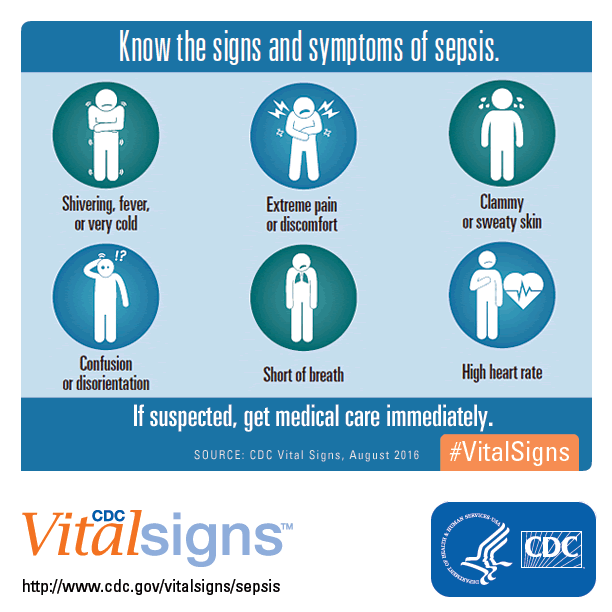Sepsis
Sepsis
Sepsis is a state of complete body inflammation. Inflammation is normally one of the first lines of defense during the invasion of the body by pathogens. However this inflammatory state must be short lived or systemic inflammation can lead to organ failure. First we need to recognize sepsis before we can treat it. So in order to do this we need only remember the acronym
I see Sepsis patients each shift and they really exhibit all these signs and symptoms. And after a while it becomes really obvious who is a candidate for a Sepsis protocol and once you have seen one sepsis patient you will not forget it. So the next question then should be how to we treat Sepsis. There is currently a Surviving Sepsis campaign that includes early recognition and treatment of this condition. It is also becoming a core measure at most hospitals. And a core measure is Evidences Based Practice that results in optimal clinical outcome for the patients.
According to the surviving sepsis campaign the following care bundles must be implemented
TO BE COMPLETED WITHIN 3 HOURS OF TIME OF PRESENTATION:
- Measure lactate level
- Obtain blood cultures prior to administration of antibiotics
- Administer broad spectrum antibiotics
- Administer 30ml/kg crystalloid for hypotension or lactate ≥4mmol/L
TO BE COMPLETED WITHIN 6 HOURS OF TIME OF PRESENTATION:
- Apply vasopressors (for hypotension that does not respond to initial fluid resuscitation) to maintain a mean arterial pressure (MAP) ≥65mmHg
- In the event of persistent hypotension after initial fluid administration (MAP < 65 mm Hg) or if initial lactate was ≥4 mmol/L, re-assess volume status and tissue perfusion and document
- Re-measure lactate if initial lactate elevated.
References
Surviving Sepsis Campaign. Society of Critical Care medicine. Care bundles retrieved from

